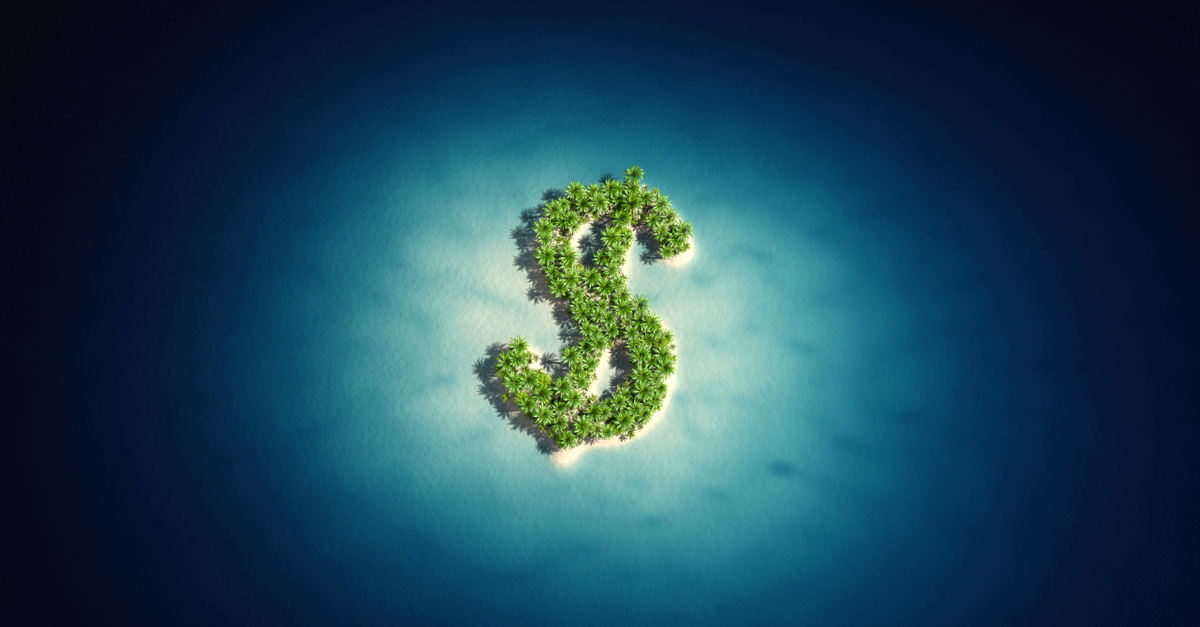Offshore Tax Haven Abuse by the Numbers
$129 billion to $205 billion: Amount that U.S. taxpayers lose in federal revenue to offshore tax haven abuse each year.
- $94 billion to $135 billion: Lost U.S. revenue from offshore profit shifting by multinational corporations annually.[i]
- $35 billion to $70 billion: Lost U.S. revenue to tax evasion by wealthy individuals annually.[ii], [iii]
$2.6 trillion: The amount of untaxed profits held offshore by the largest 500 U.S. companies.[iv]
$752 billion: The U.S. taxes owed by these companies on the $2.6 trillion stashed offshore.[v]
$5,186: What each small business in the U.S. would have to pay in additional taxes each year to jointly make up for the federal and state revenue lost to offshore tax haven abuse by multinational corporations.[vi]
$7.6 trillion: The lower-end estimate for the hidden wealth stashed in offshore tax havens—equivalent to 8% of the global financial assets of households.[vii]
366: Number of Fortune 500 corporations (amounting to 73%) that use offshore tax havens—including the big banks taxpayers bailed out in 2008.[viii]
2,010: Offshore subsidiaries in tax havens for Bank of America, Citigroup, JPMorgan-Chase, Goldman Sachs, Wells Fargo and Morgan Stanley combined.[ix]
18,857: Registered businesses at one address in the Cayman Islands.[x]
285,000: Companies housed at 1209 N. Orange Street in Wilmington, Delaware.[xi]
85%: Fortune 500 companies reported having at least one subsidiary in Delaware in 2014. In total, these companies reported more than 19,000 Delaware subsidiaries.[xii]
4.7%: Next highest percentage of subsidiaries incorporated in any other state.[xiii]
30%: Corporate share of the U.S.’s tax receipts in the mid-1950s.[xiv]
10.6%: Corporate share of the nation’s tax receipts in 2015.[xv]
$620 billion to $970 billion: Amount of illicit financial outflows (enabled by tax haven secrecy) from developing and emerging economies in just 2014.[xvi]
$36 billion to $69 billion – Money that Sub-Saharan Africa lost to trade mispricing and other illicit outflows in 2014.[xvii]
5.3% to 9.9% – Illicit outflows from Sub-Saharan Africa as a percent of total trade in 2014—higher than any other region in the world.[xviii]
For more information, please contact Clark Gascoigne at cgascoigne@thefactcoalition.org.
Footnotes:
- Clausing, Kimberly. “Profit shifting and U.S. corporate tax policy reform,” Washington Center for Equitable Growth, May 2016. (accessible at http://equitablegrowth.org/report/profit-shifting-and-u-s-corporate-tax-policy-reform/).
- Zucman, Gabriel. “The Hidden Wealth of Nations: The Scourge of Tax Havens”. University of Chicago Press, September 22, 2015 (accessible at http://www.press.uchicago.edu/ucp/books/book/chicago/H/bo20159822.html).
- Guttentag, Joseph, and Reuven Avi-Yonah, “Closing the International Tax Gap,” in Max B. Sawicky, ed., Bridging the Tax Gap: Addressing the Crisis in Federal Tax Administration (2006), (Available at http://repository.law.umich.edu/cgi/viewcontent.cgi?article=1069&context=book_chapters).
- Phillips, Richard, Matt Gardner, Alexandria Robins, and Michelle Surka. “Offshore Shell Games 2017: The Use of Offshore Tax Havens by Fortune 500 Companies.” Institute on Taxation and Economic Policy and U.S. PIRG Education Fund, October 2017 (accessible at https://itep.org/offshoreshellgames2017/).
- Ibid.
- Surka, Michelle. “Offshore Tax Havens Cost Small Businesses on Average $5,128 a Year”. U.S. PIRG. November 29, 2016 (accessible at https://uspirg.org/news/usp/offshore-tax-havens-cost-small-businesses-average-5128-year).
- Zucman.
- Phillips, Gardner, Robins, and Surka.
- Id.
- Government Accountability Office. “International Taxation: Large U.S. Corporations and Federal Contractors with Subsidiaries in Jurisdictions Listed as Tax Havens or Financial Secrecy Jurisdictions.” December 2008 (accessible at http://www.gao.gov/highlights/d08778high.pdf).
- Phillips, Richard. “Delaware: An Onshore Tax Haven.” Washington, DC: Institute on Taxation and Economic Policy, December 2015 (accessible at http://itep.org/itep_reports/2015/12/delaware-an-onshore-tax-haven.php).
- Id.
- Id.
- Kocieniewski, David. “G.E.’s Strategies Let It Avoid Taxes Altogether.” The New York Times. March 24, 2011 (accessible at https://nyti.ms/2ol4IZM).
- Gardner, Matthew, Robert McIntyre, and Richard Phillips. “The 35 Percent Corporate Tax Myth”. Institute on Taxation and Economic Policy, March 2017 (accessible at https://itep.org/the-35-percent-corporate-tax-myth/).
- Salomon, Matthew and Joseph Spanjers. ” Illicit Financial Flows to and from Developing Countries: 2005-2014.” Global Financial Integrity. May 1, 2017 (accessible at http://www.gfintegrity.org/wp-content/uploads/2017/05/GFI-IFF-Report-2017_final.pdf).
- Salomon and Spanjers.
- Id.

